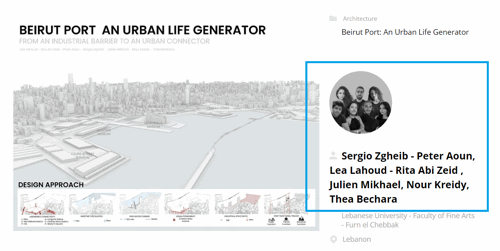House of Future

Project idea
Future House in Dubai: Project Declaration and Context
The "Future House in Dubai" project aims to present an innovative model reflecting modern trends in sustainable and technologically integrated architectural design. This project aligns with Dubai's vision as a leading city in innovation and technology, striving to achieve a balance between environmental sustainability and technological advancement while respecting the region's cultural and environmental identity.
Project Goals:
Design a Sustainable and Smart Home:
Utilize renewable energy sources, such as solar and wind energy.
Implement water management and recycling technologies for improved environmental efficiency.
Integrate Advanced Technology:
Apply smart home systems powered by Artificial Intelligence (AI) and the Internet of Things (IoT).
Develop an interactive environment that simplifies residents' lives and meets future needs.
Harmonize with Local Identity:
Draw inspiration from Dubai’s traditional architecture while incorporating modern materials.
Address Dubai’s unique climatic conditions through flexible and innovative design.
Redefine Living Spaces:
Create a flexible, multi-purpose design that adapts to future changes.
Offer a healthy environment that combines green spaces with technological comfort.
We use 11 prefabricated boxes of units in the villa. We use a grid of 1.2 meters, and for every square box, we take 4 grids, which will be 4.8 meters by 4.8 meters, and each box has a different function. For example, we take 2 boxes for Majles, 1 box for the kitchen, 1 box for the courtyard, etc. The traditional Islamic architecture, with its elegant motifs and grand entrance, not only delights the eye but also provides a sense of cultural significance. The central courtyard, in addition to its aesthetic appeal, serves as an effective way to keep the interior cool, enhancing the villa's functionality in the hot climate. The fusion of contemporary comfort and local heritage ensures that every element in the villa serves both an aesthetic and functional purpose, resulting in a space that is both inviting and practical.
Project description
The "Future House in Dubai" is an advanced architectural model designed to offer a sustainable and smart living experience tailored to the region’s future. The project consists of a traditional majles, four bedrooms, a kitchen, a living room, and a courtyard, blending local traditions with modern technology.
Scope of the Solution:
Functional Design:
Majles: A comfortable and tech-enabled space for gatherings, preserving the traditional Emirati majles aesthetic.
Bedrooms: Smart, cozy designs with automated lighting and temperature controls for maximum comfort.
Kitchen: A smart kitchen equipped with energy-efficient appliances and waste management systems.
Living Room: An open-plan space with integrated entertainment systems.
Courtyard: A green and shaded central space with water features to enhance natural ventilation and create a serene atmosphere.
Environmental Sustainability:
The courtyard is designed to promote natural ventilation, reducing reliance on air conditioning.
Sustainable building materials are used to minimize energy consumption.
Smart Technology:
A smart home management system to control lighting, ventilation, and temperature.
IoT-connected appliances for seamless remote control.
Climate Adaptation:
Heat- and humidity-resistant designs tailored to Dubai’s climate.
Water-saving technologies for the courtyard and kitchen.
Balancing Tradition and Modernity:
A fusion of the traditional majles with modern aesthetics in the other spaces.
Incorporating traditional architectural elements with advanced technology to provide a holistic living experience.
Technical information
Sustainability:
Overall construction was straightforward with each container being craned into position and locked in place. We used brand new containers rather than recycled so we knew everything would fit together perfectly.
One of our biggest challenges, however, was thermal insulation. Metal boxes are notoriously difficult to insulate effectively, and reaching the required thermal values meant we had to think outside the box.
1) High-performance closed-cell insulation
We use a polyurethane-based product that is spray-applied directly to the internal walls of each container. It is a closed-cell foam that expands, completely filling difficult-to-reach construction voids and creating a continuous, uninterrupted thermal barrier.
2) Steel studwork lining
A vapor barrier and conventional plasterboard were applied, creating an effective self-contained fire compartment and, at the same time, providing a decorative internal finish. The spray foam insulation completely encapsulates the studwork and adheres to the contours of the metal container shell, eliminating the risk of condensation.
We also utilize solar panels, taking advantage of the constant sunlight in the UAE, to reduce our electricity consumption during the day by harnessing the power of the sun.









